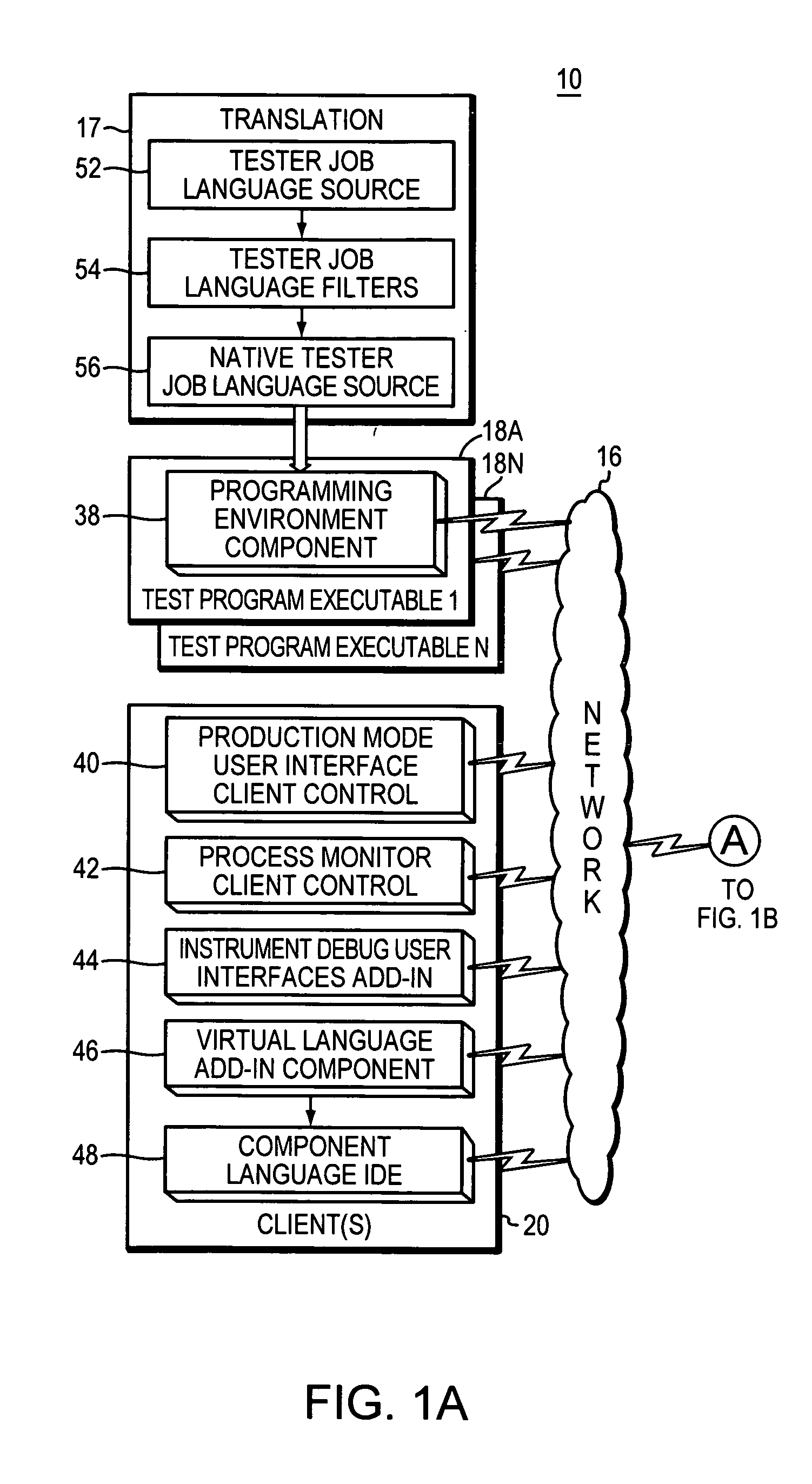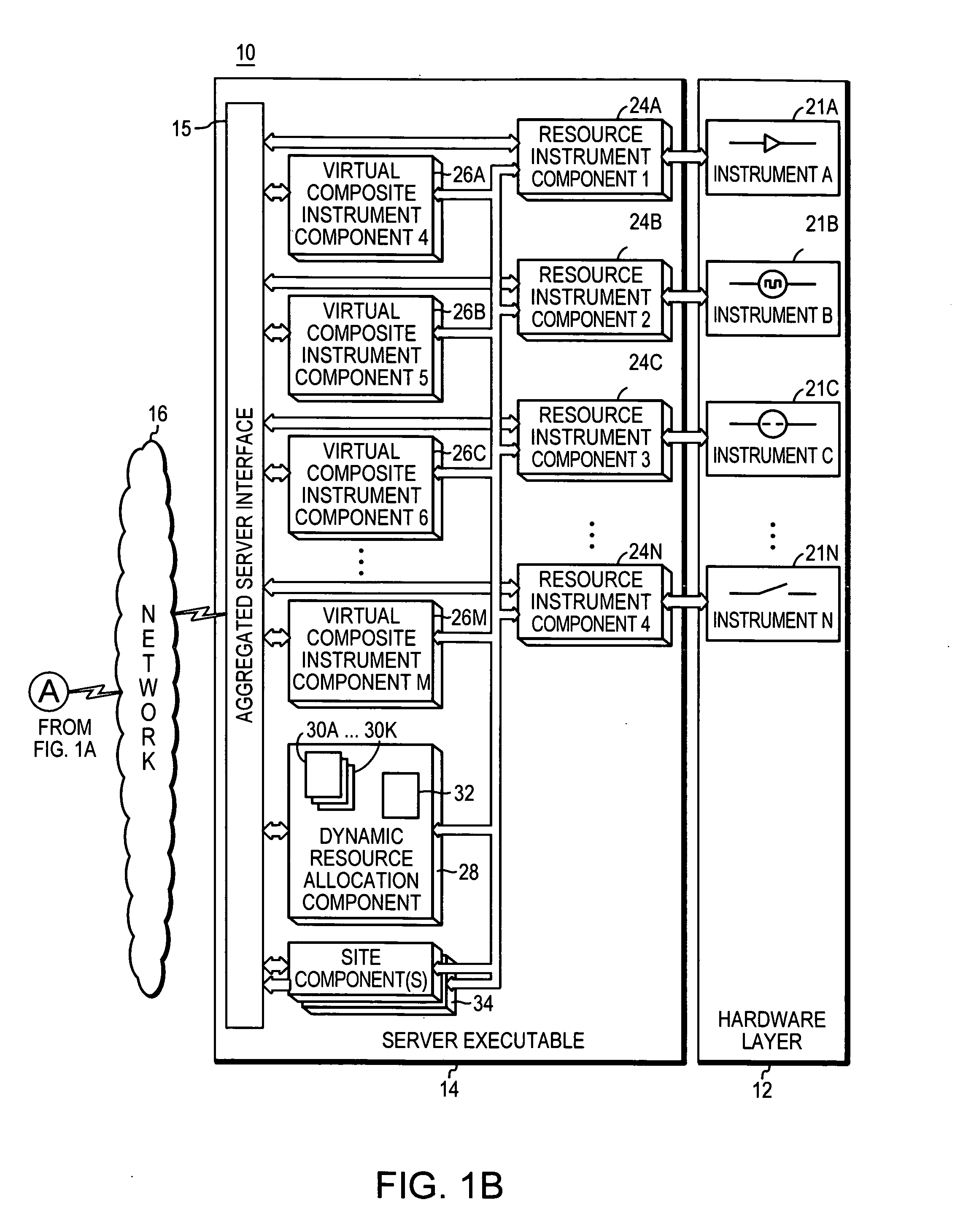Polymorphic automatic test systems and methods
a technology of applied in the field of polymorphic automatic test system and method, can solve the problems of over-utilization of unused resources for other tasks, all resources not needed to test the particular device under test remain idle, and the cost of writing these job programs exceeds the capital cost of automatic test equipment, so as to increase the utilization of tester resources and increase the productivity of our novel testers
- Summary
- Abstract
- Description
- Claims
- Application Information
AI Technical Summary
Benefits of technology
Problems solved by technology
Method used
Image
Examples
Embodiment Construction
[0051]FIGS. 1A and 1B are high level block diagrams of a polymorphic automatic test equipment system 10, which illustrate a hardware layer 12 and a software architecture including server executable 14 (FIG. 1B) and external job executables 18A through 18N (FIG. 1A). Hardware layer 12 includes several hardware resources 21A, 21B . . . 21N, generally considered at a low level of capability. Polymorphic automatic test equipment system 10 uses any of the known and publicly available computer hardware systems.
[0052] For example, hardware layer 12 may include one or a group of each of the following hardware elements: A control bit, a voltmeter, an amp meter, a current source, a digital drive channel, a digital receive channel, a clock, a time measurement meter, an AC source, a digitizer, an RF source, an RF detector, an RF meter, relays, and / or optical elements including a laser diode, an LED, or other sources of electromagnetic radiation, and a photodiode, a photoresistor or other detec...
PUM
 Login to View More
Login to View More Abstract
Description
Claims
Application Information
 Login to View More
Login to View More - R&D
- Intellectual Property
- Life Sciences
- Materials
- Tech Scout
- Unparalleled Data Quality
- Higher Quality Content
- 60% Fewer Hallucinations
Browse by: Latest US Patents, China's latest patents, Technical Efficacy Thesaurus, Application Domain, Technology Topic, Popular Technical Reports.
© 2025 PatSnap. All rights reserved.Legal|Privacy policy|Modern Slavery Act Transparency Statement|Sitemap|About US| Contact US: help@patsnap.com



